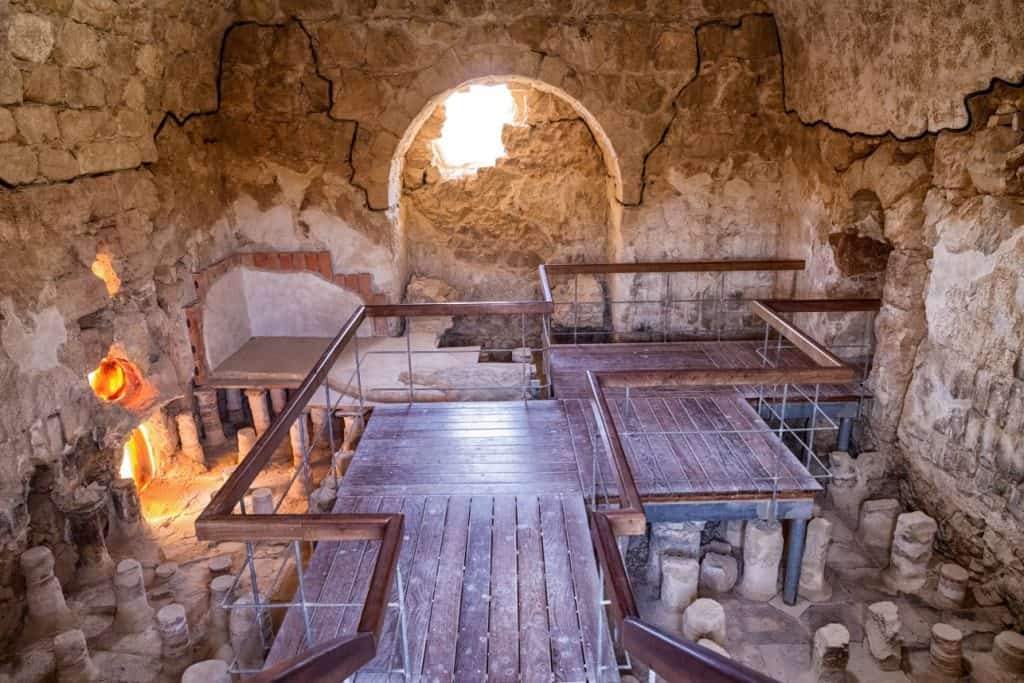The mikveh (Jewish ritual baths) is a ritual bath used in Judaism for various purification purposes. It holds significant religious and spiritual importance within the Jewish faith.

The primary purpose of the mikveh (Jewish ritual baths) is for ritual immersion, known as tevilah, which is performed for various reasons, including conversion to Judaism, purification after menstruation or childbirth, before marriage, and certain holidays and observances.
Davidson Center

Moreover, immersing in the Jewish ritual bath involves complete submersion in naturally flowing water, such as rainwater, spring water, or a specially constructed pool fed by a natural source. The person immersing should be completely naked, ensuring the water covers the entire body.
Furthermore, Jewish ritual baths can be found in synagogues, communal areas, or private homes. Traditional mikvehs are constructed with strict guidelines, including a specific minimum size, water source, and proper construction materials. Modern mikvehs often adhere to these guidelines but may include additional amenities for comfort.

Jewish ritual bath is significant in Jewish tradition and an essential part of Jewish life. Immersing in the mikveh is believed to bring about spiritual purity and transformation, symbolizing renewal and rebirth.
The Origins of the Mikveh
The origins of the Jewish ritual baths can be traced back to ancient Jewish practices and rituals related to purification. The concept of ritual immersion in water predates the establishment of the mikveh as a specific institution in Judaism.
Pool of Bethesda

The practice of immersion in water for ritual purification originates in the Hebrew Bible (Tanakh). In the book of Leviticus, there are descriptions of various purification rituals that involve immersion in water, such as for priests before performing their duties or for individuals who had become ritually impure due to contact with certain substances or conditions.
Ancient Israelite Practices: In ancient Israelite society, natural bodies of water like rivers, springs, and pools were commonly used for immersion rituals. These natural water sources were believed to possess inherent spiritual qualities and were used for purifications associated with the Temple and other religious observances.

Development of Mikveh: Over time, ritual immersion evolved, and specific structures known as mikvehs were constructed. The earliest evidence of constructed mikvehs dates back to the Second Temple period (516 BCE to 70 CE). These early mikvehs were often stone or plastered pools fed by rainwater or natural springs.
Rabbinic Influence
The development and formalization of mikveh practices can be attributed to the rabbinic period, particularly during the Mishnah (200 CE) and Talmudic era (3rd to 6th centuries CE). During this period, rabbinic sages codified laws and guidelines about mikveh use and construction, ensuring consistency and standardization in the Jewish community.

Evolution and Expansion: As Jewish communities spread throughout different regions, mikvehs became a standard feature in Jewish life. Over the centuries, mikvehs evolved and incorporated new architectural elements, such as separate chambers, stairways, and sophisticated water systems. Moreover, mikvehs extended beyond purification rituals associated with the Temple to include a broader range of observances and lifecycle events.
Furthermore, it’s important to note that immersion in water for purification purposes predates Judaism and can be found in ancient Near Eastern cultures. However, the mikveh as a distinct Jewish institution developed within the specific religious and legal framework of Judaism, influenced by biblical practices and rabbinic interpretation.

Mikvehs in Archaeological Excavations
Furthermore, archaeological excavations have uncovered mikvehs in various locations, providing valuable insights into their historical presence and design. Here are a few notable examples of mikvehs discovered through archaeological findings.
Qumran National Park

Qumran: Excavations near the Dead Sea at the site of Qumran, famous for discovering the Dead Sea Scrolls, revealed several Jewish ritual baths. These mikvehs are believed to have been used by the Essenes, a Jewish sect that likely inhabited the area during the Second Temple period.

Jerusalem: Numerous Jewish ritual baths have been found in different parts of Jerusalem, including the City of David, the Jewish Quarter of the Old City, and various archaeological sites near the Temple Mount. Some of these mikvehs date back to the Second Temple period and provide insights into the religious practices of ancient Jerusalem.
Jerusalem Ultimate Guide

Masada: Located near the Dead Sea, Masada was an ancient fortress and palace complex. Excavations at Masada uncovered several mikvehs, indicating the presence of a Jewish community and their adherence to ritual purity practices during the Roman period.
Masada Ultimate Guide

Galilee: Archaeological excavations in the Galilee region of Israel have unearthed numerous mikvehs, showcasing their widespread use in Jewish communities during different historical periods. Examples can be found on sites like Gamla, Sepphoris, and Tiberias.

